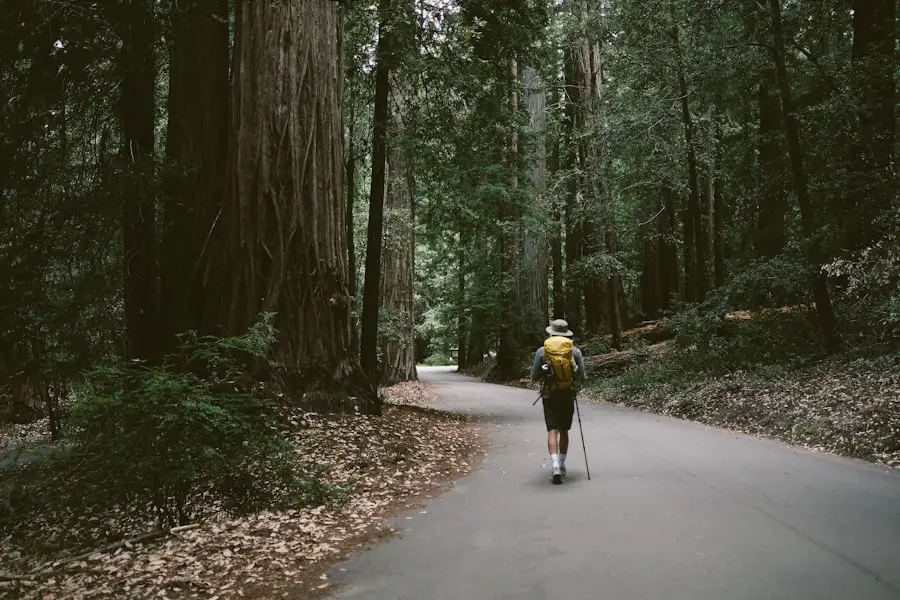Parkinson’s Disease (PD) is a progressive neurodegenerative disorder that primarily affects movement control. It is characterized by the degeneration of dopamine-producing neurons in the substantia nigra, a critical area of the brain responsible for coordinating smooth and controlled muscle movements. The onset of Parkinson’s typically occurs in individuals over the age of 60, although early-onset forms can manifest in younger adults.
The symptoms of Parkinson’s are diverse and can include tremors, rigidity, bradykinesia (slowness of movement), and postural instability. These motor symptoms are often accompanied by non-motor symptoms such as depression, anxiety, sleep disturbances, and cognitive changes, which can significantly impact the quality of life for those affected. The prevalence of Parkinson’s Disease is increasing globally, with estimates suggesting that over 10 million people are currently living with the condition worldwide.
The exact cause of Parkinson’s remains elusive, though a combination of genetic and environmental factors is believed to contribute to its development. As the disease progresses, individuals may experience increasing difficulty with daily activities, leading to a greater reliance on caregivers and healthcare services. Understanding the multifaceted nature of Parkinson’s is crucial for developing effective management strategies, including the role of physical activity in enhancing the well-being of patients.
Key Takeaways
- Parkinson’s Disease is a progressive neurological disorder that affects movement and can cause tremors, stiffness, and difficulty with balance and coordination.
- Exercise has been shown to improve motor function, balance, and quality of life for Parkinson’s patients, and can also help manage symptoms such as depression and anxiety.
- Safety considerations for Parkinson’s patients include the need for supervision, proper warm-up and cool-down, and the use of assistive devices if necessary.
- Hiking is a beneficial exercise option for Parkinson’s patients as it provides cardiovascular benefits, improves balance and coordination, and allows for exposure to nature and fresh air.
- Bicycling is also a great exercise option for Parkinson’s patients, as it improves cardiovascular fitness, strengthens muscles, and can be adapted to different levels of ability.
Benefits of Exercise for Parkinson’s Patients
Engaging in regular physical activity has been shown to provide numerous benefits for individuals with Parkinson’s Disease. Exercise can help mitigate some of the motor symptoms associated with the condition, such as rigidity and bradykinesia. Studies have demonstrated that aerobic exercise, strength training, and flexibility exercises can improve overall motor function and enhance balance, which is particularly important given that individuals with Parkinson’s are at a higher risk for falls.
For instance, a study published in the journal “Movement Disorders” found that participants who engaged in regular aerobic exercise experienced significant improvements in their gait and overall mobility compared to those who did not exercise. Beyond physical improvements, exercise also plays a vital role in addressing the psychological aspects of Parkinson’s Disease. Many patients experience feelings of isolation and depression due to their condition.
Regular physical activity has been linked to improved mood and reduced anxiety levels. The release of endorphins during exercise can create a sense of well-being, which is essential for mental health. Furthermore, group exercise classes or activities can foster social connections among participants, reducing feelings of loneliness and enhancing emotional support networks.
Safety Considerations for Parkinson’s Patients

While exercise is beneficial for individuals with Parkinson’s Disease, safety considerations must be taken into account to minimize the risk of injury. One of the primary concerns is the increased likelihood of falls due to balance issues and postural instability. It is essential for patients to consult with their healthcare providers before starting any new exercise regimen to ensure that it is appropriate for their specific condition and level of mobility.
A tailored exercise program that considers individual capabilities and limitations can help mitigate risks. Additionally, environmental factors play a significant role in ensuring safety during physical activities. For instance, uneven terrain or crowded spaces can pose hazards for individuals with Parkinson’s.
It is advisable to choose locations that are well-maintained and free from obstacles. Wearing appropriate footwear that provides good support and traction can also help prevent slips and falls. Moreover, having a companion during exercise sessions can provide an extra layer of safety, as they can assist if any difficulties arise.
Hiking as an Exercise Option for Parkinson’s Patients
| Metrics | Data |
|---|---|
| Improvement in Motor Symptoms | Studies have shown that hiking can lead to improvements in motor symptoms such as gait, balance, and coordination in Parkinson’s patients. |
| Cardiovascular Benefits | Hiking can provide cardiovascular benefits, helping to improve heart health and overall fitness levels in Parkinson’s patients. |
| Mental Health Benefits | Engaging in hiking can have positive effects on mental health, reducing stress and anxiety, and improving mood in Parkinson’s patients. |
| Social Interaction | Hiking in groups or with a partner can provide opportunities for social interaction, reducing feelings of isolation and improving overall well-being. |
| Flexibility and Range of Motion | Hiking involves a range of movements that can help improve flexibility and range of motion in Parkinson’s patients, reducing stiffness and rigidity. |
Hiking presents a unique opportunity for individuals with Parkinson’s Disease to engage in physical activity while enjoying the benefits of nature. The varied terrain encountered on hiking trails can provide both challenges and rewards, allowing patients to work on their balance and coordination in a stimulating environment. Hiking can be adapted to suit different fitness levels; patients can choose shorter, flatter trails or more challenging routes depending on their abilities.
This adaptability makes hiking an appealing option for many individuals with Parkinson’s. Moreover, hiking offers psychological benefits that extend beyond physical fitness. Being outdoors in natural settings has been shown to reduce stress and improve mood.
The sights and sounds of nature can provide a calming effect, which is particularly beneficial for those dealing with anxiety or depression related to their condition. Additionally, hiking often involves social interaction when done in groups or with friends and family, fostering connections that can enhance emotional well-being.
Bicycling as an Exercise Option for Parkinson’s Patients
Bicycling is another excellent form of exercise for individuals with Parkinson’s Disease, offering both cardiovascular benefits and opportunities for social engagement. Riding a bicycle can improve leg strength and endurance while promoting better balance and coordination. The rhythmic motion of pedaling can also help alleviate some motor symptoms associated with Parkinson’s, such as stiffness and rigidity.
Many patients find that cycling provides a sense of freedom and independence that may be diminished due to their condition. Adaptive bicycles are available for those who may have difficulty riding traditional bikes due to balance issues or other motor impairments. These adaptive options include tricycles or recumbent bikes that offer greater stability and comfort while cycling.
Furthermore, cycling can be done alone or in groups, making it a versatile activity that can be tailored to individual preferences. Group rides not only provide motivation but also create opportunities for social interaction, which is vital for mental health.
Comparison of Hiking and Bicycling for Parkinson’s Patients

When comparing hiking and bicycling as exercise options for individuals with Parkinson’s Disease, several factors come into play that may influence personal preferences and suitability. Hiking allows for a more varied workout experience due to the changing terrain and elevation levels encountered on trails. This variability can challenge balance and coordination in ways that are beneficial for improving motor function.
However, hiking may also present more risks related to uneven surfaces or steep inclines, which could be daunting for some patients. On the other hand, bicycling offers a more controlled environment where patients can maintain a steady pace on flat surfaces or designated bike paths. The repetitive motion of pedaling can be easier on the joints compared to hiking on rugged terrain.
Additionally, cycling may be more accessible for those who have difficulty walking long distances or navigating uneven ground. Ultimately, the choice between hiking and bicycling will depend on individual preferences, physical capabilities, and safety considerations.
Tips for Safe Hiking and Bicycling for Parkinson’s Patients
To ensure a safe and enjoyable experience while hiking or bicycling, individuals with Parkinson’s Disease should consider several practical tips. For hiking, it is advisable to start with shorter trails that are well-marked and maintained. Patients should wear sturdy shoes with good grip to prevent slips on uneven surfaces.
It is also beneficial to hike with a companion who can provide assistance if needed and help navigate any challenging sections of the trail. When it comes to bicycling, selecting an appropriate bike is crucial. Adaptive bicycles may be necessary for those with balance issues or limited mobility.
Patients should also wear helmets at all times to protect against head injuries in case of falls. Planning routes that are flat and free from heavy traffic can enhance safety while cycling. Regular breaks during longer rides can help prevent fatigue and allow individuals to assess their comfort levels throughout the activity.
Conclusion and Recommendations
In summary, both hiking and bicycling offer valuable exercise options for individuals living with Parkinson’s Disease, each presenting unique benefits tailored to different preferences and abilities. Engaging in regular physical activity not only helps manage motor symptoms but also contributes positively to mental health by fostering social connections and enhancing overall well-being. It is essential for patients to consult healthcare professionals when considering new exercise routines to ensure safety and appropriateness based on their individual conditions.
As individuals explore these activities, they should remain mindful of their limitations while also embracing opportunities for growth and improvement in their physical capabilities. By prioritizing safety through careful planning and preparation, individuals with Parkinson’s can enjoy the myriad benefits that both hiking and bicycling have to offer, ultimately enriching their lives despite the challenges posed by their condition.
For Parkinson’s patients, it is important to consider the safety of different physical activities. A related article on compact binoculars for hiking (source) may provide insights into the benefits and challenges of hiking for individuals with Parkinson’s disease. This article could help individuals weigh the risks and benefits of hiking compared to bicycling as a form of exercise.
Love travel? Join Our Facebook Community
FAQs
What are the benefits of hiking for Parkinson’s patients?
Hiking can improve balance, coordination, and cardiovascular health for Parkinson’s patients. It also provides opportunities for social interaction and exposure to nature, which can have positive effects on mental well-being.
What are the benefits of bicycling for Parkinson’s patients?
Bicycling can improve mobility, strength, and flexibility for Parkinson’s patients. It also provides a low-impact form of exercise that can help with symptom management and overall physical health.
Is hiking safe for Parkinson’s patients?
Hiking can be safe for Parkinson’s patients with proper precautions and supervision. It is important to choose appropriate trails, use walking aids if necessary, and be mindful of potential hazards.
Is bicycling safe for Parkinson’s patients?
Bicycling can be safe for Parkinson’s patients with proper precautions and supervision. It is important to use a stable and well-fitted bicycle, wear protective gear, and be mindful of balance and coordination challenges.
Which activity is safer for Parkinson’s patients, hiking or bicycling?
Both hiking and bicycling can be safe for Parkinson’s patients when done with proper precautions and supervision. The safety of each activity depends on individual abilities, preferences, and the specific conditions of the environment. It is important for patients to consult with their healthcare providers to determine which activity is best suited for their needs.
